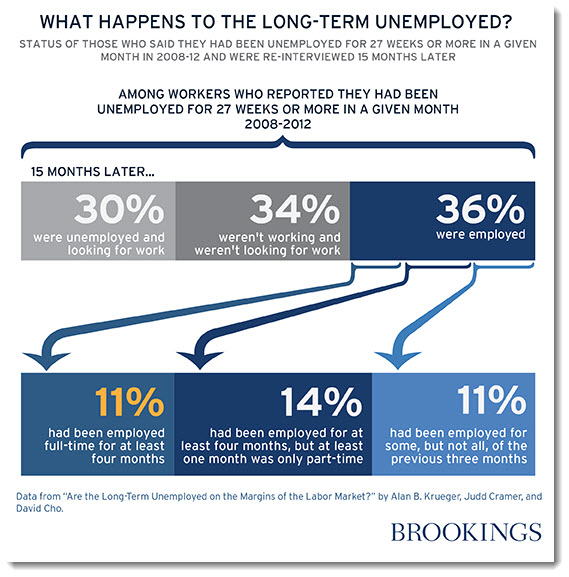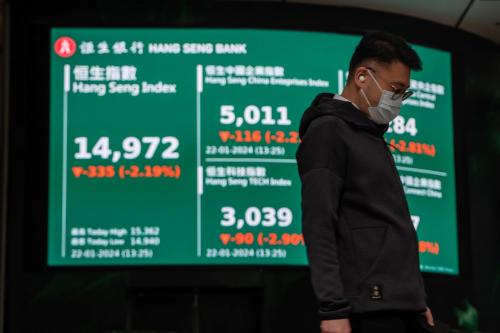The Spring 2014 Brookings Panel on Economic Activity takes place March 20–21, 2014 at Brookings. The panels will be live-tweeted under the Chatham House rule using hashtag #BPEA.
Long-term unemployment has received considerable attention in recent months. In one of the BPEA papers, authors Alan B. Krueger, Judd Cramer and David Cho “find that even after finding another job, reemployment does not fully reset the clock for the long-term unemployed, who are frequently jobless again soon after they gain reemployment: only 11 percent of those who were long-term unemployed in a given month returned to steady, full-time employment a year later.”
See all of the long-term unemployment graphics here »
.@BrookingsEcon kicks off 2-day #BPEA conference tomorrow. What’s #BPEA? Watch @justinwolfers explain: http://t.co/cWTCkpLZZq
— Brookings (@BrookingsInst) March 19, 2014
In addition to the paper on the long-term unemployed, the other new research findings at the spring conference include:
• the effects of the Federal Reserve’s unconventional policies on financial stability
• an assessment of “Abenomics,” Japan’s aggressive monetary and fiscal stimulus
• how American stimulus spending was allocated after the Great Recession
• the “wealthy hand-to-mouth” who own illiquid assets
• why the Fed should pursue a policy of targeting nominal GDP




Commentary
CHART: What Happens to the Long-term Unemployed?
March 20, 2014